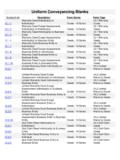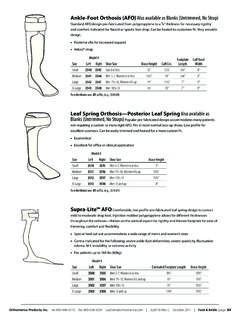Transcription of LADDERShifts - Blanks full version
1 LADDERS hifts Dr. Samuel R. Chand ( ) I. 7 LADDER RUNGS TO YOUR DESTINY A. T B. W C. D D. A E. H F. C G. D II. 8 NEW CHALLENGES FACING LEADERS TODAY Because life is dynamic, we may experience one to a lesser degree today, while one that hadn t affected us will suddenly register off the scale tomorrow. A. All leaders are looking for NEW P in leadership B. All leaders are experiencing NEW P in their journey C. All leaders are finding themselves in NEW P D. All leaders need people to provide NEW P E. All leaders are engaging with NEW P F. All leaders are being fueled by NEW P G. All leaders are embarking on NEW P H.
2 All leaders are excited by NEW P 2 III. NEW PEOPLE My main job was developing talent. I was a gardener providing water and other nourishment to our top 750 people. Of course, I had to pull a few weeds, too. Jack Welch, former chairman and CEO, General Electric Company. A. Leadership is filled with people issues. No leader is immune to them; they come with the T . B. The people who got you to where you are now may not be the ones who take you where you need to go. At D junctures in our lives we need D types of people in our lives. C. 3 Types of people you will encounter: 1. Where you used to be we reach D to assist them. The best use of power is to give power away help others succeed.
3 2. People who are going where you re going we reach O to them. 3. People who are in the place that you want to be we reach U them. D. When you don t know how to disengage and engage with people it causes pain. E. 8 Types of people you will deal with: 1. Positive and N people Agreement is not always positive and disagreement is not always negative; people can disagree with us and still add value. 2. People you have O Excellence is found on the edges, never in the middle. If you don t grow, you ve gotta go! 3. People who are tied to yesterday s solutions dealing with the old guard is an issue that every leader has to wrestle with. Yesterdays solutions have become today s problems!
4 4. That s not my J people When engaging leaders and other personnel you have to look at 3-C s: A. Character Can I T them? 3B. Competency Can they do the J ? C. Chemistry Will they F who we are? 5. People who have not moved on When the vision and movement of the leader and organization are out of sync it calls for realignment leading to organizational congruence. Who is going to take this journey with me and who is not? 6. People who can give you N perspective The first three months of a new leader or employee are their best in giving perspective and feedback. After that they assume the DNA of the organization. 7. People you can be T with Why is it so difficult to find people to talk to?
5 It s because the stakes are higher. There are fewer people who fully understand the reality of your new position at this juncture in your life. 8. People who can celebrate your S You want people who can help you celebrate your journey. F. 3 Growth Principles: 1. The way to get your organization to grow is to grow your L in numbers and depth. 2. Surround yourself with people who challenge Y to grow. If we only surround ourselves with people like us, our weaknesses are never challenged. The Company You Keep It is better to be alone than in the wrong company. Tell me who your best friends are, and I will tell you who you are. If you run with wolves, you will learn how to howl.
6 But, if you associate with eagles, you will learn how to soar to great heights. A mirror reflects a man s face, but what he is really like is shown by the kind of friends he chooses. The simple but true fact of life is that you become like those with whom you closely associate for the good and the bad. The less you associate with some people, the more your life will improve. Any time you tolerate mediocrity in others, it increases your mediocrity. An important attribute in successful people is their impatience with negative thinking and negative acting people. As you grow, your associates will change. Some of your friends will not want you to go on. They will want you to stay where 4they are.
7 Friends that don t help you climb will want you to crawl. Your friends will stretch your vision or choke your dream. Those that don t increase you will eventually decrease you. Consider this: Never receive counsel from unproductive people. Never discuss your problems with someone incapable of contributing to the solution, because those who never succeed themselves are always first to tell you how. Not everyone has a right to speak into your life. You are certain to get the worst of the bargain when you exchange ideas with the wrong person. Don t follow anyone who s not going anywhere. With some people you spend an evening: with others you invest it. Be careful where you stop to inquire for directions along the road of life.
8 Wise is the person who fortifies his life with the right friendships. - Anonymous 3. Focus on your organization s C and not its packaging this will attract new people. What attracts people is becoming part of an organization that s going somewhere, that s doing something, that s changing the world. IV. NEW PAINS God whispers to us in our pleasures, speaks to us in our conscience, but shouts in our pains; it is his megaphone to rouse a deaf world. Lewis, Author, The Problem of Pain A. Today s leaders are facing new pains 1. Exploding rate of change 2. Rapid technological innovations 3. Finding honest and competent people 4. Serving a multi-cultural milieu 5. Building programs 6.
9 Increase / Decrease in membership 7. Ever increasing need for resources B. When you re the CEO, you re never O . 5C. Your willingness to handle pains you encounter will determine the L of leadership to which you ll rise. You will grow only to the threshold of your pain. D. 3 kinds of pains all leaders face. 1. E pains such as cultural changes, external pressures and competitive realities. Cultural shifts demand new ways of looking at things and new vocabularies. You are no longer in control the things you had control of begin wriggling from your grasp. Heeding those pains can keep you from becoming irrelevant. Irrelevance is irreverence! 2. O pains such as conflict, decision making and higher stakes.
10 The success of a growing organization brings new pains. The angst of the struggle to make the right decision always brings pains. 3. I pains such as discovering yourself and your limits, inadequacies and relationships. Things don t turn out as we expected. Often, there is an inability to articulate internal realities. It is harder to keep our minds and words synchronized with what we re seeing internally. All leaders must bear the pains of criticism. New pains will always be part of your life as you continue to climb the ladder to your destiny. V. NEW PLACES The next sea change is upon us. We must recognize this change as an opportunity to take our offerings to the next Gates, co-founder and chairman, Microsoft.







